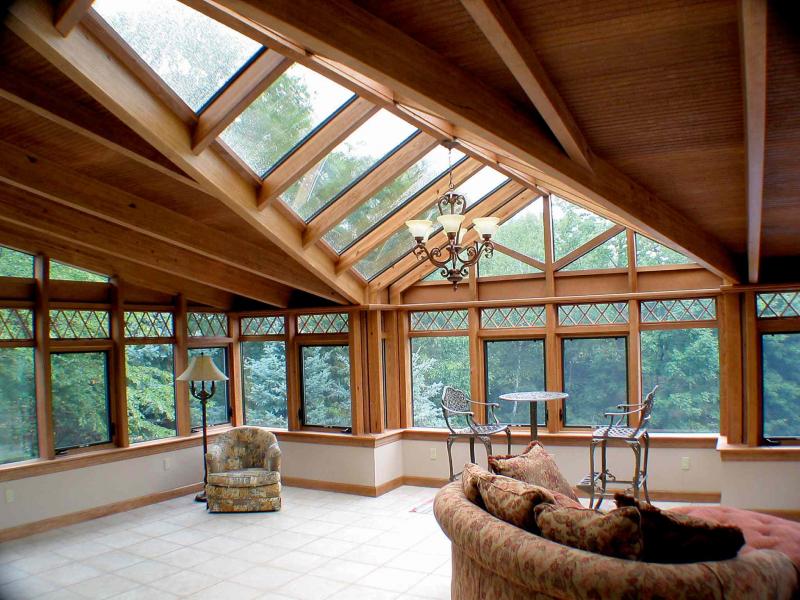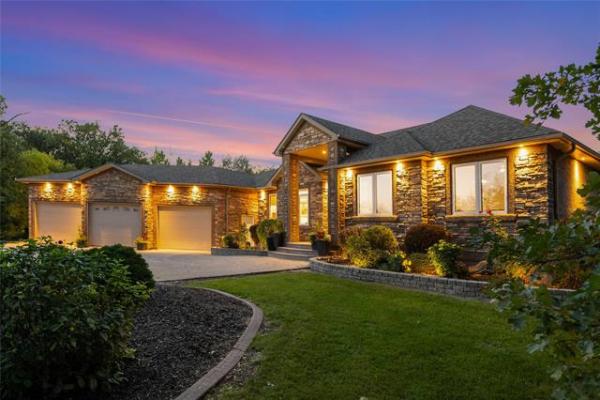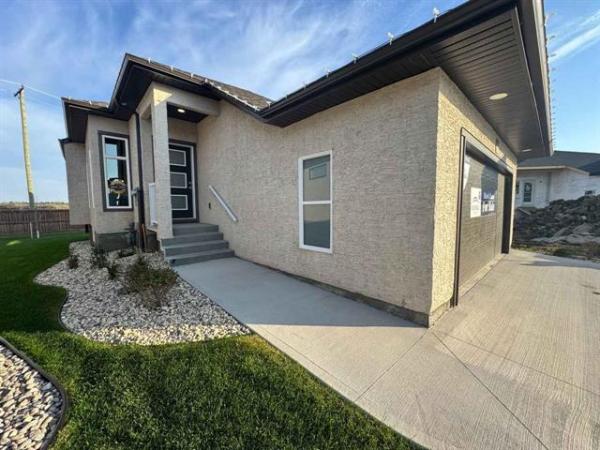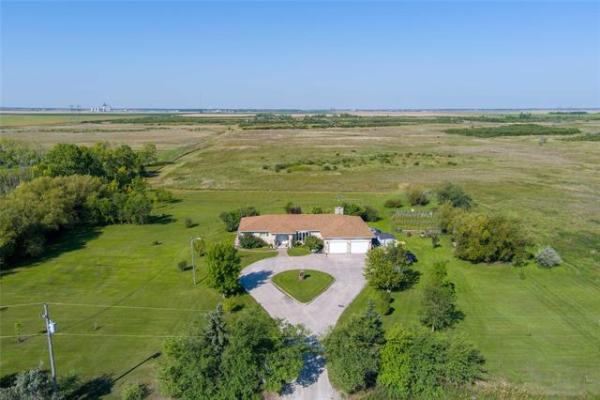If you're replacing a roof or building a new addition to your home, perhaps you should think twice about installing skylights and other natural light fixtures to brighten a dreary room.
There are two basic designs: the window-type with an optional wand or electric opener and the dome-style that allows natural light to enter a home via a roof-mounted lens attached to a flexible reflective tube.
Though window skylights will dramatically increase the amount of light in a room and may give you a glimpse of the stars at night, they are prone to leaking if not properly installed. For this reason, many roofers will subcontract the work to companies specializing in skylight installation.
Danny Antonyshyn of Antonyshyn Roofing was trained by Velux, a manufacturer of curb-and-deck mounted skylights and Sun Tunnel domes.
"I see quite a few cases in which a fly-by-night roofer has not bothered to read the installation instructions for curb skylights and has attempted to mount them directly to a roof's deck," said Antonyshyn,
The result is an inadequate seal between the deck and the skylight resulting in leakage that will destroy drywall or mar other interior finishes. In extreme cases, sufficient water may seep through poorly sealed light to stain rugs, floors or furniture.
Antonyshyn said the proper way to install a curb skylight is to build a box of two-inch by four-inch or two-inch by six-inch lumber (referred to as a curb) which is sealed with a flashing kit provided at extra cost by the manufacturer. The kit includes a membrane similar to Ice and Water Shield that adheres to the deck and to the sides of the wood curb. The top and bottom flashing is grey-coloured aluminum and is designed to slide under the roofing material and wrap around the wood frame, creating a waterproof seal. Step flashing seals the sides of the curb.
Deck-mounted skylights come with a curb or box built into the unit and a surrounding flange that is screwed directly into the deck. The flashing kit covers the flange to seal the skylight to the deck.
A Comfort Plus 21-inch by 70-inch deck mounted Velux unit costs about $500 plus $100 to $130 for a flashing kit, depending on the height (four-inch or six-inch) of the box, according to a Velux representative.
She said electric or solar-powered skylights are available that can be controlled by a panel inside the house -- these units can be programmed to close automatically when it rains.
Antonyshyn warned that an electrician must be hired to connect an electric model to a 15-amp circuit in the home's main panel box, increasing the installation cost. A drywaller should be hired to cover the rough interior sides of the skylight hole, unless you are a DIYer with drywalling skills. Painting the drywall can also be accomplished by a DIYer, though many people prefer to employ a professional, especially if the skylight opening is accessible only with a ladder.
"For people who want to keep installation costs low, I recommend a hand-operated model or a sealed unit that does not open," said Antonyshyn, adding that a fancy light with all the bells and whistles could cost several thousand dollars by the time it is put in.
Though skylights are sold with double or triple-pane low-e argon filled glass, Jeff Barnard of SPAR-Marathon Roofing Supplies in Winnipeg, a supplier of Velux and Columbia skylights, recommended the purchase of double-pane units.
"The small R-value gained by adding a third sheet of glass is not worth the extra cost in my opinion," said Barnard.
A salesperson for Velux in British Columbia said the ideal glass combination for a skylight should be a sheet of tempered on the outside and a sheet of laminate on the inside.
"Tempered glass is difficult to break while laminated material will not shatter into dangerous shards. It's used on auto windshields for this reason," he said, adding that skylights have a built in interior condensation gasket that drains water to the outside to keep the glass clear, which leads to the subject of where skylights should be placed in a house.
Barnard said kitchens and bathrooms are off limits to skylights because the excessive moisture generated in these rooms will condense on the glass, obscuring the view and clouding the incoming light.
Moreover, too much condensation could inhibit the drain gasket's ability to keep up with the flow of moisture, resulting in water possibly dripping from the skylight to the floor.
A friend of mine recently removed two skylights because no matter how hard he tried to seal them with adhesive membranes and caulking, they leaked in the winter during freeze/thaw cycles when ice formed and melted at the top edge of the lights. Another problem he encountered was a buildup of snow that covered the glass.
"I spent many hours on the roof chipping away ice dams that caused leaking and shovelling away snow that prevented light from entering my dining area," he said. "After several years, I was so frustrated that I took them out and covered the holes with plywood and shingles."
For those of us who prefer natural daylight to electric light but would prefer not to cut large holes in our roofs, Velux makes a glass dome that can be mounted in a small circular hole cut in the roof. The Sun Tunnel, as it is called, is inexpensive, simple to seal and uses a Flexi-Tube to channel light through the attic to a ceiling fixture. Sun Tunnels resemble pot lights and can be used in combination with them to increase illumination in rooms and hallways.
Aside from the potential leak, another knock on natural light products is because warm air rises a roof can be a major source of heat loss. To install a dome, a basketball size hole must be cut in a roof -- skylights, depending on the size and number installed, may require hundreds of square feet of roof insulation to be removed. Though these products have double and triple gas-filled panes, their total R-value is about five, considerably less than R-50 required by code for attics and R-30 or more for cathedral ceilings.
Natural light may be green, but increased energy consumption is not. It's worth thinking about.
davidsquare81@yahoo.com




